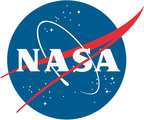Eye of the Storm: Langley Researchers Take Part In Huge Hurricane Campaign
HAMPTON, Va., Aug. 2 /PRNewswire-USNewswire/ -- As Virginians prepare for the heart of hurricane season, a team of NASA Langley Research Center scientists and engineers are preparing to take part in one of the agency's largest hurricane research efforts ever.
(Logo: https://photos.prnewswire.com/prnh/20081007/38461LOGO)
(Logo: http://www.newscom.com/cgi-bin/prnh/20081007/38461LOGO)
The Genesis and Rapid Intensification Processes mission, or GRIP, will study the basic but still unresolved questions of how hurricanes are created and why they can rapidly intensify.
NASA will hold a national media teleconference Thursday, Aug. 5, at 3 p.m. EDT, to discuss the mission.
Earlier that day, Langley engineer Michael Kavaya will be available in Hampton to talk about the mission and his team's lidar instrument, which was built at Langley and can measure hurricane winds in three dimensions – the first of its kind to do so. Kavaya is one of about a dozen Langley researchers taking part in the campaign.
Planes, satellites and scientists
GRIP includes six NASA centers, three NASA satellites, three aircraft, 14 different instruments, and many scientists. Three of the instruments were developed at Langley. The mission will run from Aug. 15 to Sept. 30, and the aircraft will be based in Florida, Texas and California.
It will be the first major field campaign to deploy NASA's Global Hawk outfitted with advanced hurricane-probing instruments. The Global Hawk's extended flight range will allow scientists to get a detailed look into a hurricane or tropical storm for a longer period of time than ever before.
Teleconference panelists are:
- Ramesh Kakar, weather focus area lead for NASA's Science Mission Directorate, NASA Headquarters, Washington
- Scott Braun, hurricane computer modeler/research meteorologist, NASA's Goddard Space Flight Center, Greenbelt, Md.
- Gerald Heymsfield, cloud radar expert/research meteorologist, Goddard Space Flight Center
- Ed Zipser, professor of Meteorology, University of Utah, Salt Lake City, Utah
Supporting information for the briefing will be posted at noon EDT on Aug. 5 at:
Audio of the teleconference will be streamed live at:
https://www.nasa.gov/newsaudio/
For more information about NASA Langley, visit:
NASA Langley news releases are available automatically by sending an e-mail message to [email protected] with the word "subscribe" in the subject line. You will receive an e-mail asking you to visit a link to confirm the action. To unsubscribe, send an e-mail message to [email protected] with the word "unsubscribe" in the subject line.



















